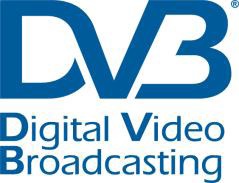 Digital Video Broadcasting (DVB) announced that the industry consortium’s steering board has approved the DVB-3DTV specification for frame compatible plano-stereoscopic (left/right) 3D television services.
Digital Video Broadcasting (DVB) announced that the industry consortium’s steering board has approved the DVB-3DTV specification for frame compatible plano-stereoscopic (left/right) 3D television services.
For more information visit: www.dvb.org
Unedited press release follows:
3DTV WINS APPROVAL
DVB Steering Board Approves 3DTV Specification.
Geneva – 21 February 2011 – DVB is pleased to announce that on February 17 at the 67th Meeting of the Steering Board, the DVB-3DTV specification was approved. The specification will be submitted immediately to the European Telecommunications Standards Institute (ETSI) for formal standardisation. BlueBook A154 „Frame Compatible Plano-Stereoscopic 3DTV‟, (DVB-3DTV) has been published and is available for downloading from the DVB website.
The Commercial Requirements for the DVB-3DTV specification were agreed in July 2010 after consultation with key industry groups. The Commercial Module’s Sub-Group on 3DTV was chaired by David Wood (EBU) and the Technical Module (TM-3DTV) was chaired by David Daniels (BSkyB).
The specification specifies the delivery system for frame compatible plano-stereoscopic 3DTV services, enabling service providers to utilise their existing HDTV infrastructures to deliver 3DTV services that are compatible with 3DTV capable displays already in the market. This system covers both use cases of a set-top box delivering 3DTV services to a 3DTV capable display device via an HDMI connection, and a 3DTV capable display device receiving 3DTV services directly via a built-in tuner and decoder.
Plano-stereoscopic imaging systems deliver two images (left and right) that are arranged to be seen simultaneously, or near simultaneously, by the left and right eyes. Viewers perceive increased depth in the picture, which becomes more like the natural binocular viewing experience. Since 2010 many 3DTV capable consumer products have been launched in the market.
The DVB-3DTV specification is also accompanied by the Subtitling Systems specification (EN 300 743), which provides a mechanism that allows subtitles and other onscreen graphics to be best positioned so that they can be viewed correctly in the stereoscopic picture. There are also amendments to the Service Information specification (EN 300 468) and to the specification of audio and video coding over the MPEG-2 Transport Stream (TS 101 154).
“I would like to extend my thanks to all the Members that participated in both the Commercial and Technical Modules to bring to fruition the DVB-3DTV specification in such a short period of time. DVB standards provide one of the keys to commercial success and stability for the industry and the consumer,” commented Peter Siebert, Executive Director, DVB.
About DVB
Digital Video Broadcasting (DVB) is an industry-led consortium of over 250 broadcasters, manufacturers, network operators, software developers, regulatory bodies and others committed to designing global standards for the delivery of digital television and data services. DVB standards cover all aspects of digital television from transmission through interfacing, conditional access and interactivity for digital video, audio and data. The consortium came together in 1993 to create unity in the move towards global standardisation, interoperability and future proofing.
DVB dominates the digital broadcasting environment with thousands of broadcast services around the world using DVB‟s open standards. There are hundreds of manufacturers offering DVB compliant equipment. To date there are over half a billion DVB receivers shipped worldwide. DVB standards are also widely used for other non-broadcasting applications such as data on the move and high-bandwidth Internet over the air. Further information about DVB can be found at: www.dvb.org, www.dvb-h.org, www.mhp.org and www.dvbworld.org.